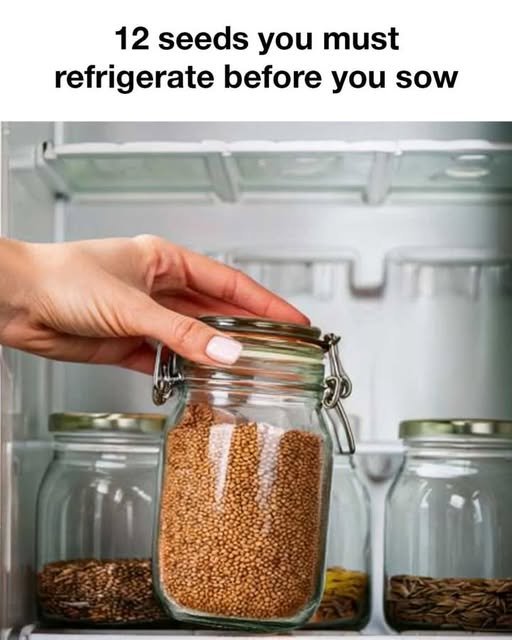Seed refrigeration, often referred to as cold stratification, is a crucial step in the gardening process for many plant species. This technique mimics the natural winter conditions that seeds experience in the wild, which is essential for breaking seed dormancy and promoting successful germination. Understanding the importance of this process can significantly enhance your gardening success, especially with certain plant varieties that require specific conditions to sprout.
Understanding Seed Dormancy
Seed dormancy is a survival mechanism that prevents seeds from germinating until conditions are favorable for growth. In nature, this ensures that seeds do not sprout during unsuitable seasons, such as winter. Dormancy can be broken by various environmental cues, such as temperature changes, light exposure, and moisture levels. For many seeds, exposure to cold temperatures is necessary to trigger the end of dormancy and initiate germination.
The Science Behind Seed Stratification
Seed stratification is the process of treating seeds to simulate natural conditions that the seeds must experience before germination can occur. Cold stratification involves exposing seeds to a period of moist, cold conditions, which can be achieved through refrigeration. This process helps to break down germination inhibitors within the seed, allowing it to sprout when planted.
Benefits of Refrigerating Seeds Before Sowing
Refrigerating seeds before sowing can significantly improve germination rates and ensure uniform sprouting. This process is particularly beneficial for seeds that require cold stratification, as it provides the necessary environmental cues to break dormancy. Additionally, refrigeration can help to prevent mold and decay, preserving seed viability over time.
How to Properly Refrigerate Seeds
To properly refrigerate seeds, place them in a moist medium such as sand, vermiculite, or a damp paper towel. Seal the seeds and medium in a plastic bag or container to maintain moisture levels. Store the container in the refrigerator, ideally at a temperature between 33°F and 41°F (1°C to 5°C), for a period ranging from a few weeks to several months, depending on the seed type.
Common Mistakes in Seed Refrigeration
One common mistake is failing to provide adequate moisture during refrigeration, which can prevent seeds from breaking dormancy. Another error is refrigerating seeds at incorrect temperatures, either too warm or too cold, which can damage the seeds. Additionally, some gardeners may not refrigerate seeds for a sufficient duration, resulting in poor germination rates.
Top 12 Seeds That Require Refrigeration
Certain seeds benefit greatly from refrigeration before sowing. These include: 1. Lavender,
2. Milkweed,
3. Coneflower,
4. Lupine,
5. Columbine,
6. Delphinium,
7. Poppy,
8. Bluebell,
9. Primrose,
10. Apple,
11. Cherry, and
12. Maple. Each of these seeds has specific requirements for cold stratification to ensure successful germination.
Detailed Guide on Refrigerating Each Seed Type
Each seed type has unique requirements for refrigeration. For example, lavender seeds typically need 4-6 weeks of cold stratification, while milkweed seeds may require 30-60 days. It’s important to research the specific needs of each seed type to determine the optimal duration and conditions for refrigeration.
How Refrigeration Affects Germination Rates
Refrigeration can significantly enhance germination rates by breaking seed dormancy and ensuring that seeds are ready to sprout when planted. By simulating natural winter conditions, refrigeration helps seeds to overcome internal barriers to germination, leading to more consistent and successful sprouting.
Alternative Methods to Seed Refrigeration
In addition to refrigeration, other methods can be used to break seed dormancy, such as soaking seeds in water, scarification (scratching the seed coat), or using chemical treatments. However, these methods may not be as effective for seeds that specifically require cold stratification.
Frequently Asked Questions About Seed Refrigeration
Common questions about seed refrigeration include: How long should seeds be refrigerated? What temperature is ideal for seed stratification? Can all seeds be refrigerated? These questions highlight the importance of understanding the specific needs of each seed type to ensure successful germination
Conclusion: The Importance of Refrigeration for Successful Sowing
Refrigerating seeds before sowing is a vital step for many plant species, as it mimics natural conditions necessary for breaking dormancy. By understanding and implementing proper seed refrigeration techniques, gardeners can significantly improve germination rates and achieve successful plant growth.



